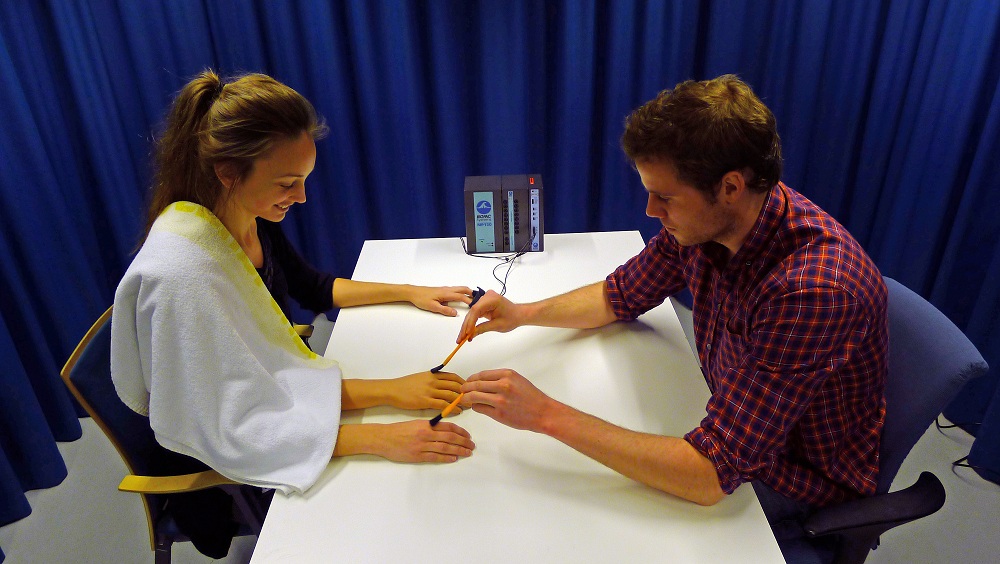A Mind Trick May Help Advance Prosthetics

The knife blade whistles through the air, your palm starts to sweat, but the knife stops just short of the back of your hand.
Luckily, it was your third, rubber hand.
In a matter of minutes, researchers are able to convince subjects that they have three arms. "Most participants describe it as a strange and unnatural feeling," said study researcher Arvid Guterstam, of the Karolinska Institute in Sweden. This illusion might come in handy as advanced prosthetics are developed, he said.
Here's how the illusion works: A participant sits at a table with his or her forearm and hand resting on a tabletop. A fake rubber arm is placed next to the person's arm. A towel covers from the shoulder to forearm of both the fake and real limbs, so that in the participant's mind either of the arms could be the real one. The two right hands are simultaneously stroked, and in less than a minute the participant starts to feel that he or she has two right arms.
When the researcher stabs at the air above the fake arm with a kitchen knife, the participant has the same physical reaction as if a real hand were threatened. Participants are able to claim ownership of the rubber arm without disowning the real one.
Mapping the body
"The brain is constantly trying to answer the question, 'Where is my body?'" Guterstam told LiveScience. "It does that by combining information from position, touch and signals from the muscles and tendons in your arm."
Get the world’s most fascinating discoveries delivered straight to your inbox.
The brain develops a map of the body to keep track of where our limbs are and what they are doing, to keep them from harm, enable movement and provide a sense of bodily self. It seems that the third-arm illusion relies on the brain area usually used for designating your right arm, and so divides its attention, Guterstam said.
The things our limbs experience, such as touch, aren't just located on the limb itself. They are also located in this brain map, said Peter Halligan, a researcher at Cardiff University who wasn't involved in the study. "People can have experience of stimulating the limb just by stimulating the brain."This body map is also responsible for the phantom-limb phenomenon , where amputees experience pain in their missing limb.
Three-armed man
This third-arm phenomenon actually isn’t that uncommon. Halligan recalls stumbling across his first case — an individual with a phantom third arm — during a study on stroke patients. He asked, "How many limbs do you have?" to which the patient responded: "Would you be surprised if I said three?"
"He was very worried about being thought of as psychiatric patient," Halligan told LiveScience. "He had an experience of a limb that I could touch and he fully understood I couldn't see it. It felt temperature changes."
Understanding how the brain comes to own another limb could help design prosthetics for stroke patients with partial paralysis. They could have a robot or prosthetic arm alongside their paralyzed arm, Guterstam said.
"This could have important bearings on the development of new advanced prostheses, where the patient can control and experience ownership of another arm," Guterstam said.
The study was published today (Feb. 23) in the journal PLoS ONE.
You can follow LiveScience staff writer Jennifer Welsh on Twitter @microbelover.
Jennifer Welsh is a Connecticut-based science writer and editor and a regular contributor to Live Science. She also has several years of bench work in cancer research and anti-viral drug discovery under her belt. She has previously written for Science News, VerywellHealth, The Scientist, Discover Magazine, WIRED Science, and Business Insider.



